This article is part of our NFL Draft series.
Full disclosure: Most of the players we're discussing here won't make a 53-man roster or ever have a serious impact in the NFL. The goal isn't to convince you to add undrafted rookies to your fantasy teams, but rather to establish a level of familiarity for when depth charts inevitably get diminished by injuries in August and September.
Last year we actually saw one undrafted rookie, Phillip Lindsay, quickly emerge as his team's lead back (and a solid RB2 for fantasy squads) without the help of significant injuries to teammates. By the end of the season there were three additional undrafted rookie RBs — Gus Edwards, Jeff Wilson and Josh Adams — that had varying stretches of fantasy relevance.
And while the learning curve is much steeper for other positions, Bills wideout Robert Foster exploded for 511 yards and three touchdowns in seven games during November and December despite going undrafted in April. The year prior it was Jacksonville's Keelan Cole who had 475 yards and three TDs over the final five weeks of his rookie season after latching on as a UDFA.
Both wide receivers quickly proved they should've been drafted, but the production was arguably a matter of opportunity more so than skill, as Cole and Foster now sit no higher than fourth on their respective teams' depth charts. All of these prospects are highly flawed in one way or another, so we'll mostly want to focus on the guys that landed in favorable spots for rookie-year playing time, rather than relying on subjective evaluations of which players deserved to be drafted.
That said, I definitely need to thank Rotowire CFB/draft experts Mario Puig (@rotowiremario) and John McKechnie (@Johnnymckechs) for pointing me toward some of the better prospects amongst the horde. I like to think I know my own limitations as a stathead/NFL-focused guy, so it's great to get some help from analysts who watch a lot of college tape.
Running Backs
 Kansas City Chiefs James Williams (Washington State)
Kansas City Chiefs James Williams (Washington State)
Don't you love it when a running back with 202 receptions in college lands with an RB-needy offense led by Andy Reid and Patrick Mahomes? Ok, so there's no actual precedent here, but it isn't too hard to imagine Williams or sixth-round pick Darwin Thompson seizing a large role, considering Damien Williams, Carlos Hyde and Darrel Williams are the returning veterans in the backfield. James Williams may be a step slow (4.58 40) and a few pounds too light (197), but pass-catching skill is one of the best predictors of NFL success for running backs, and few can match him in that regard. The Kansas City backfield accounted for 13 rushing scores and 12 receiving scores last season, continuing a multiyear trend of Reid directing targets to his RBs in the red zone.
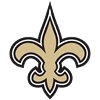 New Orleans Saints Devine Ozigbo (Nebraska)
New Orleans Saints Devine Ozigbo (Nebraska)
I'd typically ignore this prospect profile — an oversized running back with one productive collegiate season — except that the 235-pound Ozigbo did quite well for himself to land with a high-powered offense where there's open competition for the No. 3 RB spot. He doesn't need to be anything special to beat out Dwayne Washington and Martez Carter, which would then put him one Latavius Murray injury away from a significant role. And to be fair, Ozigbo's one productive season (2018) at Nebraska was rather impressive, featuring 12 touchdowns and an average of 7.0 yards on 155 carries.
 Houston Texans Karan Higdon (Michigan) and Damarea Crockett (Missouri)
Houston Texans Karan Higdon (Michigan) and Damarea Crockett (Missouri)
Higdon is the more familiar name following two seasons as the lead back at Michigan, but it's Crockett who received $45k in guarantees from Houston. The 224-pound Mizzou product was timed around 4.4-flat in the 40-yard dash at his pro day, finally regaining some steam after back-to-back seasons impacted by injuries and backfield committees. The Texans don't have much else behind their top two running backs, and does anyone really think Lamar Miller and D'Onta Foreman will both stay healthy and productive this season?
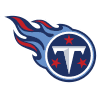 Tennessee Titans Alex Barnes (Kansas State)
Tennessee Titans Alex Barnes (Kansas State)
The KSU product is my first concession to talent over opportunity, as his competition for the No. 3 RB spot in Tennessee includes a proven special teams contributor (David Fluellen) and a guy who was a solid prospect in own right a couple years back (Jeremy McNichols). I'm thinking the Titans will at least find a spot on the practice squad for Barnes, who ran for 1,355 yards last season and then tore up the 2019 combine with top-five marks among RBs for the vertical jump (38.5 inches), broad jump (126 in.), bench press (34 reps), three-cone drill (6.95 seconds) and short shuttle (4.10). Those agility numbers are rare for a 226-pounder, but his 40 time (4.59) was right in line with size-based expectations.
 Carolina Panthers Elijah Holyfield (Georgia)
Carolina Panthers Elijah Holyfield (Georgia)
A 4.78 40 dropped Holyfield out of the draft and into the scrap heap, but he at least managed to land with a team that has shaky depth behind its starter. While the UGA product isn't a strong bet to earn a roster spot, it would be unwise to write him off completely when the competition consists of Cameron Artis-Payne, Elijah Hood (knee) and rookie fifth-round pick Jordan Scarlett. The Panthers are really banking on Christian McCaffrey to stay healthy.
 Tampa Bay Buccaneers Bruce Anderson (North Dakota State)
Tampa Bay Buccaneers Bruce Anderson (North Dakota State)
I can't say I'd heard of Anderson before the draft, and it probably isn't the best idea to get super excited about an FCS committee back with mediocre athletic testing numbers (4.58 40, 119-inch broad jump, 31-inch vertical). So what's the appeal? Well, it's pretty simple. Anderson is set to enter rookie minicamp (May 10-12) as the only rookie RB under contract for a team that seems to be counting on big things from Peyton Barber and Ronald Jones. Given how shaky that plan is, I'm surprised the Bucs didn't prioritize adding undrafted rookies to their backfield. Maybe they really like Anderson?
Wide Receivers
 Kansas City Chiefs Jamal Custis (Syracuse), Cody Thompson (Toledo), Felton Davis (MSU)
Kansas City Chiefs Jamal Custis (Syracuse), Cody Thompson (Toledo), Felton Davis (MSU)
I'm not seeing anything special here in terms of talent, but Adam Schefter reports that Custis received the most guaranteed money (over $100k) of any undrafted wide receiver the past two years. The contract alone makes him a player of interest, not to mention the problematic state of Kansas City's wideout corps in light of the Tyreek Hill situation. Even with my ticket on the Mecole Hardman hype train already paid for, there's room for a second rookie to earn targets when the competition is Demarcus Robinson, Gehrig Dieter, Sammie Coates, Marcus Kemp and Byron Pringle. We'll be keeping a close eye on this position group all summer.
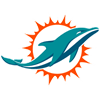 Miami Dolphins Preston Williams (Colorado State)
Miami Dolphins Preston Williams (Colorado State)
A 2017 domestic-violence incident combined with a poor pro day scared NFL teams away from Williams, who had a 96-1,345-14 receiving line during his lone season at CSU. Meanwhile, college teammate Bisi Johnson went to Minnesota in the seventh round, despite posting a 54-794-4 line in the same offense. While he'll probably need at least a year or two to develop, Williams has a good chance to stick on the 53-man roster as part of the rebuilding project in Miami. Don't be surprised if he finds his way to regular snaps during the second half of the season.
 Chicago Bears Emanuel Hall [Missouri]
Chicago Bears Emanuel Hall [Missouri]
Here's another concession to talent over opportunity, as Hall seemed like a surefire draft pick after tearing up the combine with a 4.39 40, 43.5-inch vertical and a ridiculous 141-inch broad jump. He even said he posted those numbers at less than full strength while working his way back from the groin injury that limited him to eight games his senior season. Hall caught only 70 passes the last two years, but he ripped off 23.5 yards per reception and hit paydirt 14 times. For further context, Scott Barrett of PFF shows us QB Drew Lock's numbers with/without Hall in the lineup for Mizzou the past two seasons:
Drew Lock's numbers without Emanual Hall are baaaad. pic.twitter.com/Ot6kFfzLyU
— Scott Barrett (@ScottBarrettDFB) April 28, 2019
Opponent strength is a factor in the equation, but this still helps the case for Hall while hurting the case for Lock (Denver's second-round pick). Perhaps NFL teams were scared off by concerns that Hall will eventually have sports hernia surgery, though that wouldn't make much sense considering the procedure rarely requires more than two or three months for recovery. Whatever the case, Hall unfortunately landed on a team with solid depth at his position, but he should make a run at the sixth and final spot behind roster locks Allen Robinson, Anthony Miller, Taylor Gabriel, Cordarrelle Patterson and Riley Ridley.
 Tampa Bay Buccaneers Anthony Johnson (Buffalo)
Tampa Bay Buccaneers Anthony Johnson (Buffalo)
The JuCo transfer had Day 2 hype following a 76-1,356-14 receiving line his first season at Buffalo, but he fell all the way out of the draft after declining to 57-1,011-11 in 2018 and then struggling at the combine. While he's an extreme long shot to win the job this preseason, Johnson may eventually enter the competition for Tampa's No. 3 spot at wide receiver. Other candidates include Breshad Perriman, 2018 fifth-round pick Justin Watson and 2019 sixth-round pick Scott Miller — not exactly an intimidating bunch. Miller has speed and slot expertise working in his favor, but coach Bruce Arians may prefer to use Chris Godwin and/or Mike Evans inside.
 Oakland Raiders Keelan Doss (UC-Davis)
Oakland Raiders Keelan Doss (UC-Davis)
Injured while bench-pressing at the combine, Doss bounced back with a 4.45 40 at his pro day after piling up 3,744 receiving yards the past three seasons in the FCS. Raiders coach Jon Gruden already told Doss he'll get plenty of snaps during the preseason and will have a good chance to make the 53-man roster. Part of that is just a coach trying to convince an undrafted player to sign with his team, but it does make sense given how shaky the Oakland depth chart looks at wide receiver behind Antonio Brown and Tyrell Williams.
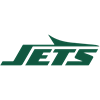 New York Jets Greg Dortch (Wake Forest)
New York Jets Greg Dortch (Wake Forest)
Believe it or not, Marquise Brown isn't necessarily the smallest WR prospect in the 2019 rookie class. That honor may go to Dortch, who was still recovering from a wrist injury when he checked in at 5-foot-7, 173 pounds at the combine. He may have been even lighter at his pro day where he was timed around 4.5 in the 40-yard dash. That's somewhat disappointing for a player his size, but there's no shortage of successful NFL slot receivers with poor 40 times, including Jets teammate Jamison Crowder (4.56). Pro Football Focus gave Dortch its highest grade on slot snaps of any receiver in the 2019 draft class, ahead of even A.J. Brown and Parris Campbell. As much as Dortch intrigues me, any path to fantasy relevance with the Jets probably requires a Crowder injury. A spot on the 53-man roster is much less to ask for, as the rookie's ability to return punts (two TDs for Wake last season) makes him a nice fit with a team that lost Andre Roberts during the offseason.
 Indianapolis Colts Penny Hart (Georgia State) + Ashton Dulin (Malone)
Indianapolis Colts Penny Hart (Georgia State) + Ashton Dulin (Malone)
The Colts brought in two wide receivers that put up big numbers against soft college competition, with the 5-foot-8 Hart profiling as a slot specialist while the 6-foot-1 Dulin is your classic unpolished size-speed freak (4.43 40, 215 pounds). I guess that makes Hart the more intriguing player for 2019, but in both cases I'm more interested to see if these guys can stick around for 2020 when Devin Funchess and Chester Rogers may be out of the picture.
 Buffalo Bills David Sills (West Virginia)
Buffalo Bills David Sills (West Virginia)
Best known as the 13-year-old quarterback that Lane Kiffin offered a scholarship, Sills instead ended up catching 33 touchdowns the past two years at WVU, though he hauled in just 57.3 percent of his targets in the process. Following a solid-but-unspectacular showing at the 2019 combine, the 6-foot-3 wide receiver went undrafted and then landed a $35k signing bonus from the Bills. While unlikely to challenge for a significant Week 1 role, Sills at least has a decent chance to win a roster spot and could find his way to some late-season snaps.
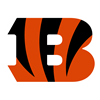 Cincinnati Bengals Stanley Morgan (Nebraska)
Cincinnati Bengals Stanley Morgan (Nebraska)
Morgan's name already carries some weight in the NFL, though it turns out he isn't related to four-time Pro Bowler Stanley Morgan, who led the league in yards per catch three straight years from 1979 to 1981. The Nebraska product is an entirely different type of wide receiver, sitting right around league-average for the position in terms of both size (6-foot, 202 pounds) and speed (4.53 40). Morgan had strong marks in the jumping and agility drills at the combine, after catching 131 passes for 1,990 yards and 17 TDs the past two years at Nebraska. I like his chances to stick around in Cincinnati, where the projected No. 3 wideout (John Ross) looks like a bust and the lower part of the depth chart is a joke. It's entirely possible Morgan outplays the likes of Ross, Alex Erickson and Josh Malone this summer.











